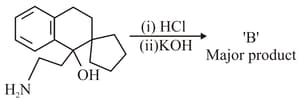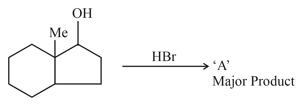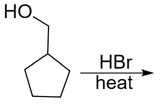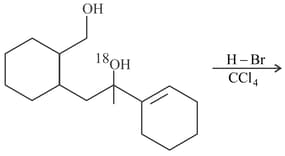Chemical Properties of Alcohols
Chemical Properties of Alcohols: Overview
This topic covers concepts, such as, Chemical Properties of Alcohols, Alcohols as Nucleophiles, Mechanism of Dehydration of Alcohols & Haloform Reactions of Alcohols etc.
Important Questions on Chemical Properties of Alcohols
An organic compound A has the molecular formula . It gets hydrolysed with dilute sulphuric acid and gives a carboxylic acid B and an alcohol C. Oxidation of C with chromic acid also produced B. C on dehydration reaction gives D. Identify A, B, C and D?
Aldol reaction is used as one of the step for which of the following conversions :
(i) Ethanol to 3-hydroxybutanal
(ii) Benzaldehyde to Benzophenone
Acid catalyzed hydration of alkenes except ethene leads to the formation of
The main product of the following reactions is
During dehydration of alcohols to alkenes by heating with concentrated the initiation step is –
For the given reaction

The, total number of possible products formed by tertiary carbocation of is

In the above reaction, left hand side and right hand side rings are named as and respectively. They undergo ring expansion. The correct statement for this process is:
In the reaction given below
 is:
is:

Product formed in the above reaction is:

The number of hyperconjugation structures involved to stabilize carbocation formed in the above reaction is __________.
In the following reaction, ‘’ is

Identify all the products formed in the following reaction and indicate the major product.

Which of the following alcohols is dehydrated most easily with ?
In the reaction given below, is
Energy of activation is lower for which reaction

The product is
Action of caustic soda and chlorine on ethyl alcohol gives
 Reactant can be
Reactant can be
Identify the product formed in the below reaction


Major product obtained in the reaction is:
